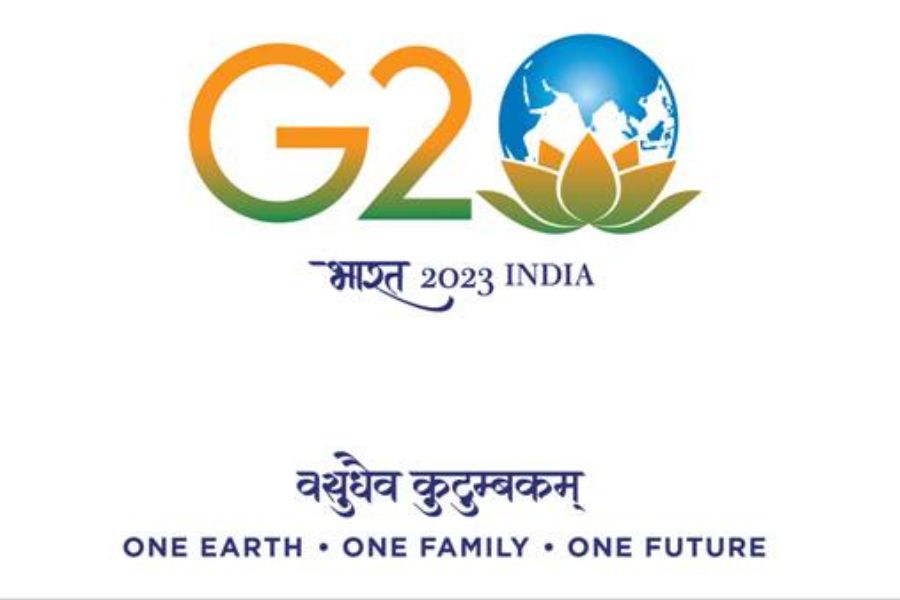Can India’s CCTS address the CBAM challenge?
On June 30, the Union Ministry of Power has notified developments on the much-anticipated carbon credit trading scheme. As per the notification, the Centre will constitute a “National Steering Committee for the Indian carbon market” to govern and oversee the functions of the market.
Experts says that a carbon market would help many leading Indian corporates who have made commitments to become carbon-neutral and the market will provide flexibility to industries like steel, cement, and petrochemicals with high reduction costs to supplement their own reduction efforts with credits from the carbon market. However, integration with international markets will be crucial to ensure accelerated transition to a low carbon economy.

Source: Shutterstock
New Delhi, July 3: India’s carbon trading market cannot be formalised a day to soon now, given the fact that Carbon Border Adjustment Mechanism or CBAM is just a few months away from coming into force. Even as the scheme is in its final stages of preparation, India has begun negotiating with the EU to recognise its Carbon Credit Trading Scheme (CCTS). At the same time, India has also submitted its views that the carbon taxes are being deliberately applied to trade exposed industries like steel, aluminium, chemicals, plastics, etc.
Major foreign companies based in India have incorporated carbon credits as one of the tools to reduce their carbon footprint. However, India currently has an energy savings-based market mechanism. The government is positive that the introduction of the Carbon Credit Trading Scheme will enhance the energy transition efforts with an increased scope that will cover potential energy sectors in India. For these sectors, GHG emissions intensity benchmark and targets will be developed, that are aligned with India’s emissions trajectory as per climate goals. Trading of carbon credits will take place based on performance against these sectoral trajectories.
On June 30, the Ministry of Power issued a notification stating the Centre will constitute a “National Steering Committee for the Indian carbon market” to govern and oversee the functions of the market. This has raised expectations for an expedited establishment of a formalised carbon trading market in India.
Secretary, Ministry of Power will be the ex-officio chairperson, while the Secretary, Ministry of Environment, Forest and Climate Change will be the co-chairperson. The committee will also have members from the Ministries of Finance, New and Renewable Energy, Steel, Coal and Petroleum, and NITI Aayog among others.
The steering committee will recommend the Bureau of Energy Efficiency for the formulation and finalisation of procedures for institutionalizing the Indian carbon market and formulation of greenhouse gas emission targets for “obligated entities”.
Manish Dabkara, Chairman and MD EKI Energy Services Ltd and President CMAI (Carbon Market Association Of India), said he welcomes the decision, “The constitution of the National Steering Committee for the Indian Carbon Market, which will be responsible for the overall management and operational control of the Indian Carbon Market, by the Central Government is a welcome move in that direction. We believe will re-establish the trust for the (carbon) market more firmly. We also appreciate the efforts of the government of India and are excited for the bright future of less carbon and more sustainability.
Carbon Credit Trading System: India’s formal introduction to carbon trading
Arjun Dutt, senior lead, Council for Energy, Environment and Water (CEEW) says that India can take a cue on the renewable energy certificate (REC) scheme or the patch scheme for decarbonization of industry from existing sectoral carbon markets. Viability of a carbon market depends heavily on the demand for carbon credits.
Under the renewable energy certificate scheme, primarily distribution utilities and large industrial consumers are required to or obligated to purchase renewable energy. In other words, renewable energy is expected to account for a minimum proportion of electricity purchases. To the extent that they are unable to make up for it in actual physical purchases, they have to purchase certificates from the REC market to make up for it. Generating demand for a new carbon market can only rely to a limited extent on voluntary buyers. However, from the perspective of generating viable demand, there must be greater reliance on obligated entities.
“If the REC mechanism had existed, there would have been a more vibrant (carbon) market. But the lesson that this presents for the new CCTS is that while certain obligated entities will sort of form the bedrock of demand, the enforcement mechanisms to actually enforce these obligations should be stringent enough. Else there could again be a faltering of demand as we saw in certain years of the REC market and then that can affect the viability of the new CCTS. Ensuring enforcement obligation is important for obligated entities,” he added.
Converting short-term pain to long-term gain
While India aggressively pursues its interests across the negotiating table, experts have cautioned that companies will need to be prepared for CBAM, at least in the short term. They suggest that companies must voluntarily prepare themselves for this transition in advance. This will require major process re-engineering and investments in technology and innovations. In this regard, Mr. Dutt feels that connecting with various international carbon markets will help attract more investments that are otherwise not flowing into India’s energy transition. If the CCTS would be interoperable with schemes like the EU ETS, it would help attract investments via that route.
Article 6 of the Paris Agreement is essentially about voluntary cooperation between countries to enable greater ambition in climate action, both mitigation and adaptation. As per some estimates by the International Emissions Trading Association, in case there is voluntary cooperation through Article 6 for joint Nationally Determined Contribution (NDC) implementation, that can result in savings of up to US$ 300 billion per year by 2030 versus a scenario of independent implementation of NDCs by countries.
While the principles governing article 6 were agreed at Glasgow at COP 26, the infrastructure and institutional arrangements are still works in progress. While this process is ongoing, Mr. Dutt says that all countries including India should select the specific sectors that are to participate in these markets. For this, he suggests that India should focus on sectors that are expensive to decarbonize and are financially underserved, to help mobilize capital for that. For such sectors, Article 6 and 6.2 can be attractive routes to channel capital that can make some of these applications more commercially viable. This can accelerate India’s transition to a low carbon economy.













What has been notified by BEE is just a governance framework and not yet a carbon trading scheme. Without a scheme in place and functioning, it’s inconceivable that India could be Negotiating with EU for equivalence or recognition.
CBAM initially just needs a system of verified emission statements and not carbon credits. What has been notified does not provide that.